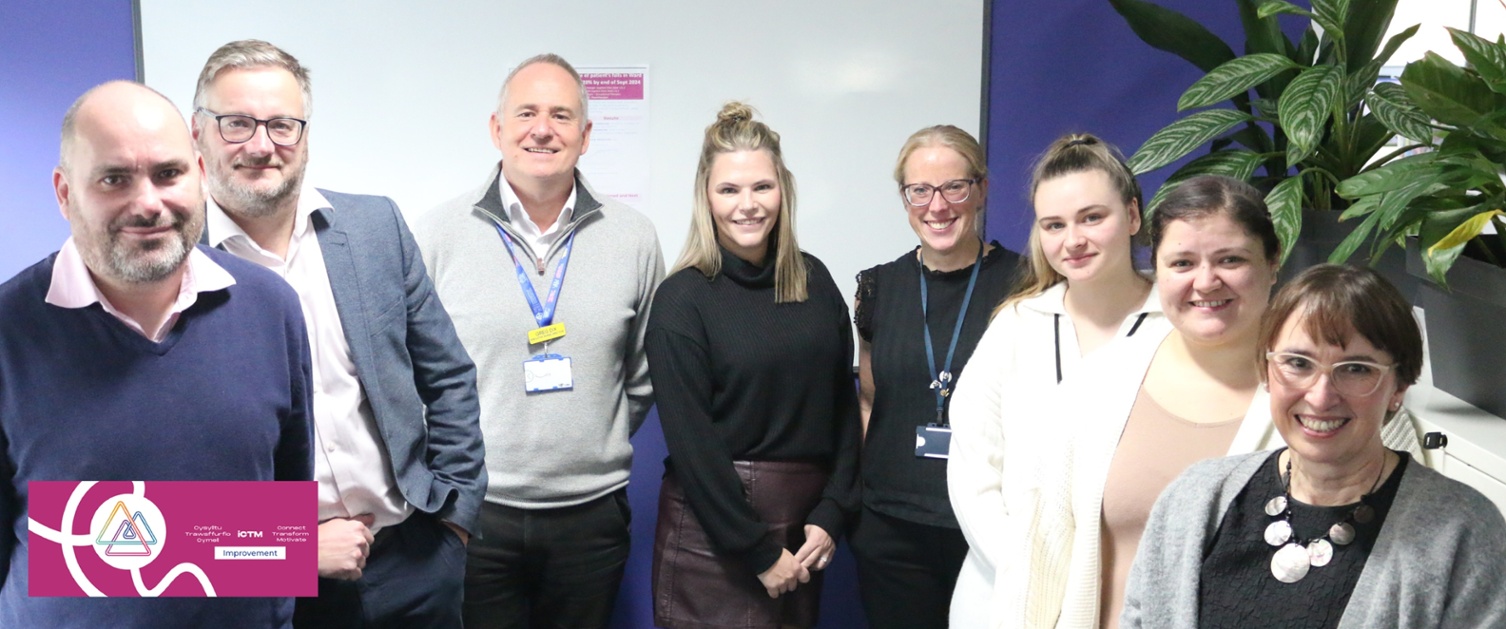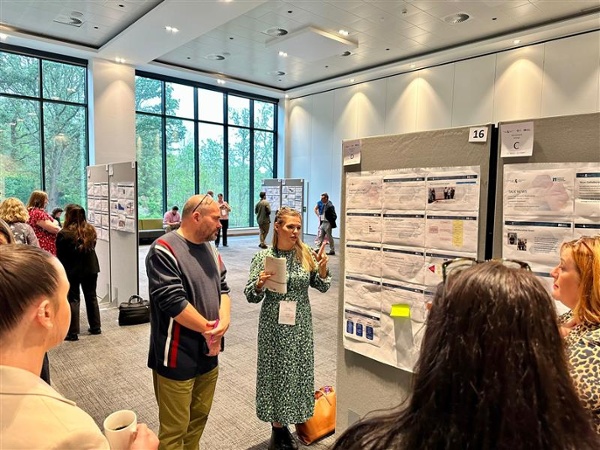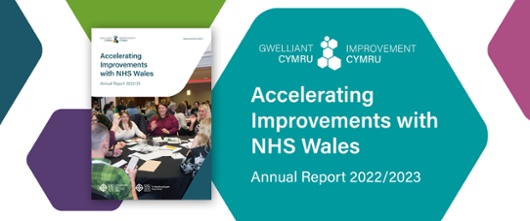Angelton Clinic's improvement project to reduce inpatient falls: a collaborative success story

The team at Cwm Taf Morgannwg University Health Board’s Angelton Clinic have been using improvement techniques to reduce inpatient falls as part of the Safe Care Collaborative.
Following an increase in inpatient falls within their older persons’ mental health unit, Angelton Clinic started an improvement project last year to identify the factors contributing to falls and proactively manage them to increase safety and reduce the number of falls. The CTMUHB Improvement Team nominated the project to be part of the Safe Care Collaborative, which meant they would have additional support from Improvement Cymru and Institute for Healthcare Improvement (IHI), and they would share their experiences with other colleagues across Wales working on their own improvement projects.
The team found that being part of the Safe Care Collaborative helped the project gain momentum, and the staff who attended the learning sessions returned feeling passionate about what they could do to develop the project.
 The team presenting their project to Safe Care Collaborative members at Learning Session 3.
The team presenting their project to Safe Care Collaborative members at Learning Session 3.
A key reason for the success of this project has been because it involved a wide, multi-disciplinary team, including, for example, nursing staff, an advanced nurse practitioner and dedicated physiotherapy, occupational therapy and psychology teams. This depth to the team has increased engagement and focus on the project. Each of the team members have brought a different area of expertise and each of their individual approaches have benefited the patients in a wider variety of ways.
A key part of the engagement was making sure the staff understood what they were doing and what they wanted to improve. Ultimately, each member of the team, at all levels, feels passionate about patient safety; they want to see the best patient outcomes. The team said that working on this project together made them aware that in order to make significant change, they needed a wider team involved.
As part of their work, and with help and support from the CTMUHB Improvement Team, the Angelton Clinic team used tools such as fishbone and driver diagrams to discover the causes of the falls. They also mapped falls on the ward to identify hotspots and trends.
The team faced challenges in pulling off data, especially for complex cases. They found there was a need for rich data to understand trends, timing, and reasons for falls, and so they started to look at how they could improve how they gather data. They are developing hot spot mapping of the ward with codes to record specific points on the ward where people are falling. It is hoped this information will be able to be added to Datix, the Risk Management Information System, which will help the team better understand the reasons for the falls.
Their studies found that major risks included medication management and environment. For example, they found that there were more falls at the times when there were change-arounds with nursing staff. Certain medication, such as those which contained hypnotics, increased the risk of a fall. Their findings were also backed up by The Royal College of Physicians National Audit of In-patient Falls which recommends undertaking sitting and standing blood pressure measurements for patients at risk of falls.
The team initiated PDSA cycles to test changes, which included providing educational packages for relevant staff on topics like orthostatic hypertension.
They also explored environmental changes, and worked with the patients and families to look into what type of furniture and flooring would create a safer environment for them, rather than using ‘one-size-fits-all’ furnishings.
Ana Llewellyn, Senior Nurse and Senior Responsible Owner (SRO) of the project, recognised the dedication of the team and the success of multi-disciplinary teamwork and therefore supported the spread of the work to other teams across the health board, including at the Royal Glamorgan Hospital and Ysbyty Cwm Cynon.
Greg Dix, Executive Director of Nursing and Deputy Director of Cwm Taf Morgannwg UHB, has been closely involved with the health board’s Safe Care Collaborative work. He said, “I couldn't be prouder of the team's dedication and progress in falls reduction. Their work has not only made a positive difference here but is also being spread to other teams, and has potential to extend to health board and across Wales."
Dominique Bird, Deputy Director of Improvement Cymru, said “Angelton Clinic’s collaborative work to reduce inpatient falls exemplifies the transformative power of multi-disciplinary teamwork. Their success in identifying and addressing root causes, coupled with their commitment to continuous improvement, sets a commendable standard for enhancing patient safety.”
The team are keen to continue to help their patients with this work and continuously improve and evolve. Moving forward, they are looking to involve patients and families more in data collection and co-producing the work. They aim to create patient stories and gather perspectives to enrich the understanding of falls. They are analysing more data and looking to measure the project's impact on improved job satisfaction and overall working conditions.
It’s still early days in the project and the team hope for even more positive changes in the long term. If you are interested in finding out more, contact Ros Davies Rosalyn.Davies2@wales.nhs.uk lead for the Safe Care Collaborative Community Workstream.




